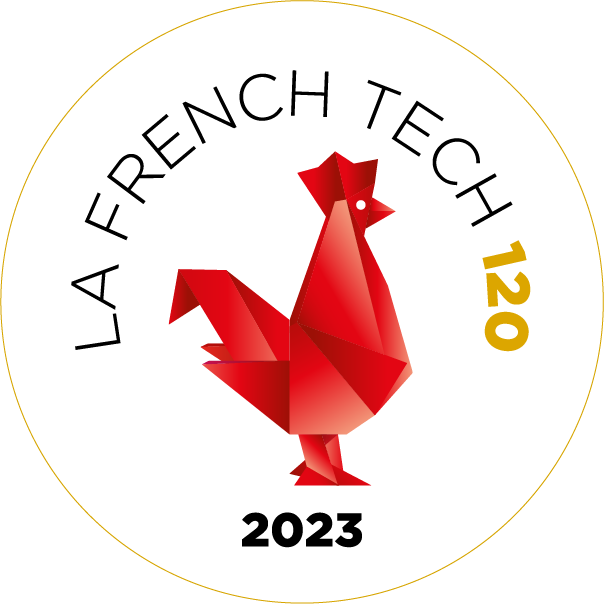Spatial connectivity for better forest fire detection:
Kinéis delivers its expertise and wins government recognition

Faced with the scale and urgency of the mega-fires ravaging the planet, Kinéis has published a White Paper on the role of technology and satellite connectivity in new approaches to forest fire detection. Building on its expertise, Kinéis has just been named the winner of two projects in a Call for National Interest (AMIN) launched by the French Ministry of Ecological Transition and Territorial Cohesion.
The last two years have been tragically similar in terms of forest fires, both in terms of their intensity and the millions of hectares ravaged, and the powerlessness of the forces deployed to contain them.
Against this backdrop, Guillaume Triquet, Head of Natural Hazards at Kinéis, took the bold step of producing the Kinéis White Paper on forest fires, by consulting the main players involved in the issue. His work highlights two key aspects in the solution to this global scourge: the vision of the stakeholders involved in this fight (Civil Security, firefighters, academics, suppliers of solution materials) and the presentation of new approaches to detecting these disasters, thanks in particular to the use of key technologies. Its approach reflects its ability, and that of Kinéis, to stay in tune with market needs and provide solutions using space connectivity for the Internet of Things.
The White Paper presents these solutions, with their advantages and disadvantages: camera-based surveillance systems for forest areas, overflight of areas by drones and balloons, and satellite observation. Faced with their limitations, early detection solutions, including satellite IoT technology, are proving to be the fastest and most reliable way of preventing and neutralizing fires.
In short, the Kinéis White Paper on forest fires offers a realistic and uncompromising assessment of the situation, which should receive the full attention of public authorities. For its author, whatever the country concerned, forest fire detection resources are limited and all too often inadequate.
The solution to these challenges will inevitably require a change in mentality, and a new way of looking at forest fires, in particular through the use of new disruptive technologies, provided of course that they deliver real added value.
In addition, massive investment must be made at local and national level in early warning systems in high-risk areas.
Finally, the exploitation and fusion of data from technologies used in early fire detection should enable and reinforce interoperability between different systems to reduce the impact of fires on the environment.
At French national level, the new Nexsis digital platform, a new alert processing and operational response management tool for the French fire and rescue services (SDIS), will integrate data from all solutions.

In the spring of 2023, this time in the context of preventing and reducing the impact of forest fires and fires in natural areas, the French Ministry of Ecological Transition and Territorial Cohesion (MTECT) has launched the National Call for Expressions of Interest (AMIN) for the Panoptès project. The aim of this project is to identify the players and solutions that can play a role in the early detection and monitoring of forest fires and fires in natural areas (civil security, laboratories, private companies) throughout France.
The French Ministry of Ecological Transition and Territorial Cohesion has commissioned Entente Valabre (Pôle Nouvelles Technologies - PONT) to carry out a preparatory study for a proposed systems deployment plan, with a view to early detection and monitoring of forest fires and natural areas on a national scale (mainland France and Corsica).
As part of this study, Entente Valabre has teamed up with the SAFE competitiveness cluster to source and evaluate French hardware and software solutions capable of meeting the objective of detecting in less than five minutes and with an accuracy of less than fifty meters, any outbreak of fire in forests or natural areas on national territory (mainland France and Corsica), and to monitor them (fire front, burnt area, fire breaks, hot spots, etc.).
To present their projects, the candidate companies formed consortia. Kinéis contributed its IoT space connectivity and know-how to two consortia: Global Operational Surveillance-Solutions & Tool Kit for FIRE (GOS-STK 4 FIRE), and VIGIFEU (VGF).
GOS-STK 4 FIRE:
The GOS-STK 4 FIRE modular solution is based on the aggregation of technical and functional bricks developed by 5 companies specialized in their field. This consortium offers various modules for :
- Data capture,
- Data transmission,
- Data ingestion, fusion, analysis and storage,
- Alert confirmation and verification,
- Data presentation and distribution.
VGF (VIGIFEU):
VIGIFEU aims to provide operational staff fighting forest fires with a unique service centered on the fusion of data from different technological vectors: sensors, cameras, drones, smartphone applications. The modular yet complementary approach of the 8 consortium members means that the technological mix can be varied according to the needs of the areas to be monitored.
Editor: Sébastien Martignac
In collaboration with Guillaume Triquet, Head of Natural Risks at Kinéis
Related Article:


About us
Created in 2018, Kinéis is a satellite IoT operator.
© kineis - IoT everywhere - 2023
Contact us
Adress
11, rue Hermès
31520 Ramonville-Saint-Agne
France
Phone
+ 33 5 61 39 47 00
Links
FAQ
Press
Newsletter
News
Privacy Policy
Cookie policy
Sitemap
Let's stay connected





